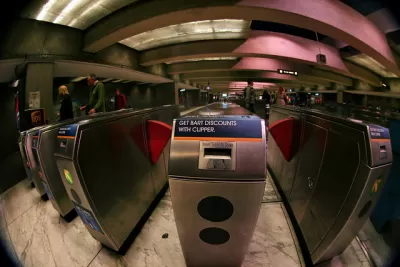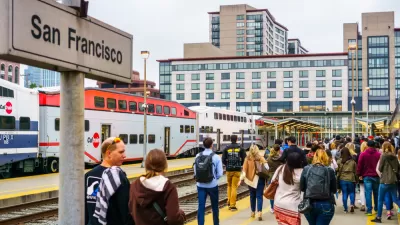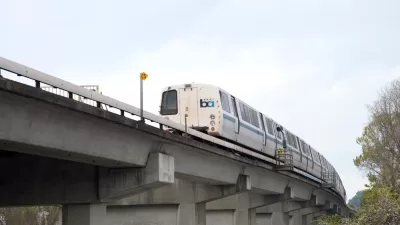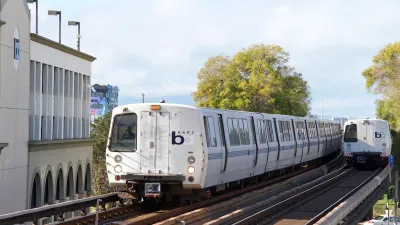How far is BART willing to go to stop people from jumping fare gates? Social media users have called new fare gates "skull crushers" and "inverted guillotines."

Lina Blanco uses the controversy arising from new BART fare gates as an opportunity to discuss hostile architecture and design in the public realm—a discussion with implications for planners as well.
"Urban planning provides tangible evidence of how a region grapples with some of its most pressing issues, whether that's budget shortfalls or a crisis of livability," according to Blanco.
If that's true the Bay Area Regional Transit system is showing a lack of patience and a tendency to violence in reaction to fare evasion, according to the public response to a proposed pilot project to redesign fare gates at a couple of system stops.
Kurt Kohlstedt, digital director and producer for the architecture and design podcast 99% Invisible, is quoted in the article describing the fare gates as a most extreme example of design. "I haven't seen anything that even comes close to the overt hostility of these inverted guillotine prototypes," said Kohlstedt.
"In a viral tweet over the weekend, BART riders expressed their concerns over a recent fare-evasion modification pilot gate spotted at Fruitvale station," writes Blanco. "Many were quick to point out how the preventative effort is a disturbing example of anti-poor, anti-homeless and ableist design. Others called the prototypes an extreme example of hostile architecture."
absolutely no one:@SFBART: pic.twitter.com/kkj4VtI0lj
— lalalina (@LinaBlanco) July 19, 2019
Blanco's tweet referred to the "inverted guillotine" version, but the "skull crusher" version also got attention on Twitter.
While BART has chosen a very particular reaction to fare evasion, many other cities and transit agencies are taking the opposite approach, decriminalizing fare evasion as a tool of discrimination that has always penalized people of color and low income people at higher rates.
Step right up, get your face smashed by BART’s new fare gates. pic.twitter.com/A70z86N5pl
— Brian McGuire (@brianrmcguire) July 2, 2019
FULL STORY: BART's Fare Evasion Crackdown Exposes the 'Deadly Elegance' of Hostile Design

Alabama: Trump Terminates Settlements for Black Communities Harmed By Raw Sewage
Trump deemed the landmark civil rights agreement “illegal DEI and environmental justice policy.”

Planetizen Federal Action Tracker
A weekly monitor of how Trump’s orders and actions are impacting planners and planning in America.

The 120 Year Old Tiny Home Villages That Sheltered San Francisco’s Earthquake Refugees
More than a century ago, San Francisco mobilized to house thousands of residents displaced by the 1906 earthquake. Could their strategy offer a model for the present?

In Both Crashes and Crime, Public Transportation is Far Safer than Driving
Contrary to popular assumptions, public transportation has far lower crash and crime rates than automobile travel. For safer communities, improve and encourage transit travel.

Report: Zoning Reforms Should Complement Nashville’s Ambitious Transit Plan
Without reform, restrictive zoning codes will limit the impact of the city’s planned transit expansion and could exclude some of the residents who depend on transit the most.

Judge Orders Release of Frozen IRA, IIJA Funding
The decision is a victory for environmental groups who charged that freezing funds for critical infrastructure and disaster response programs caused “real and irreparable harm” to communities.
Urban Design for Planners 1: Software Tools
This six-course series explores essential urban design concepts using open source software and equips planners with the tools they need to participate fully in the urban design process.
Planning for Universal Design
Learn the tools for implementing Universal Design in planning regulations.
Clanton & Associates, Inc.
Jessamine County Fiscal Court
Institute for Housing and Urban Development Studies (IHS)
City of Grandview
Harvard GSD Executive Education
Toledo-Lucas County Plan Commissions
Salt Lake City
NYU Wagner Graduate School of Public Service





























